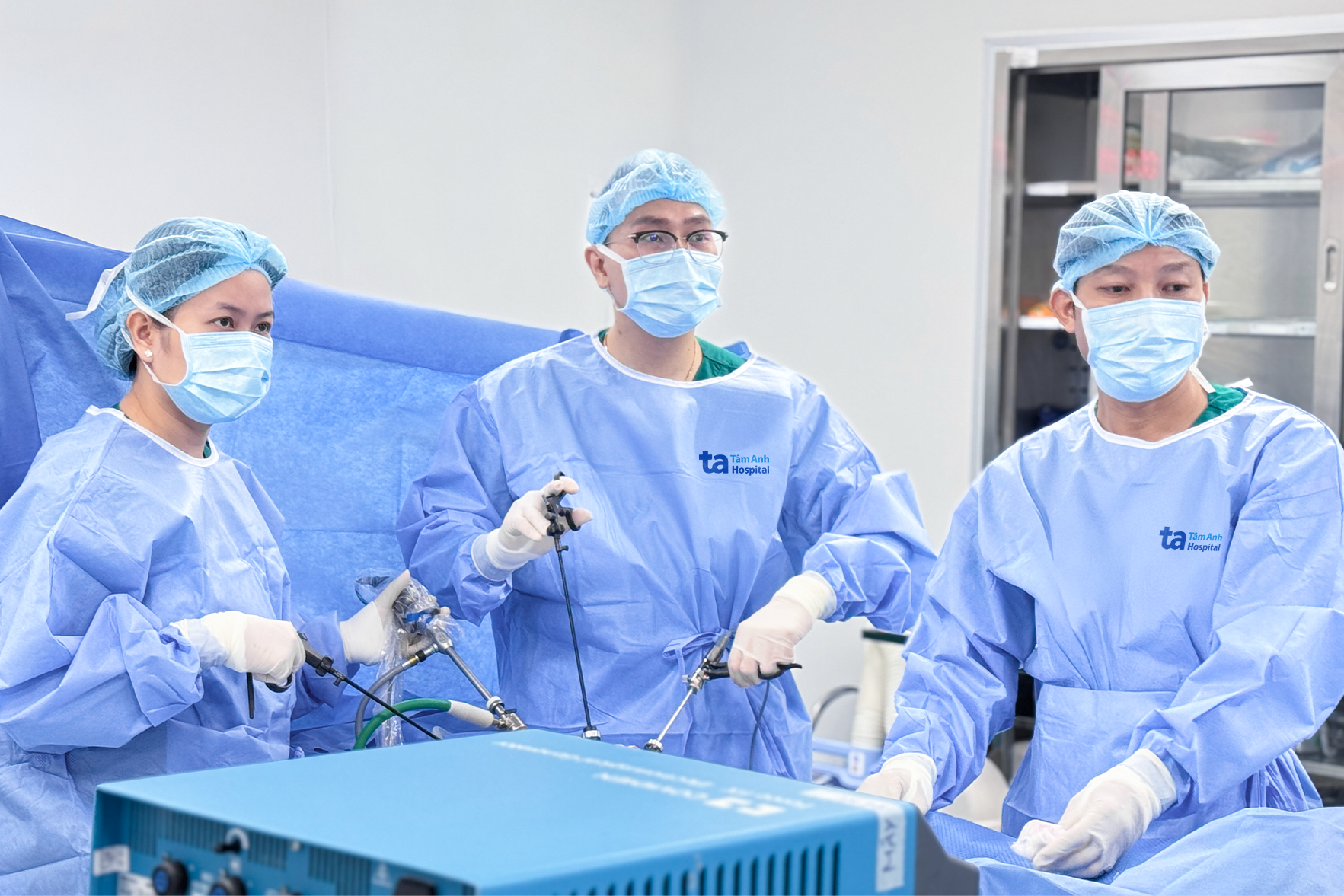Answer:
IUD insertion is a common method of contraception. This type of IUD works by creating changes in the uterine lining to prevent sperm from reaching the egg and preventing implantation. It is an effective method with a success rate of 98-99%. This means that for every 100 women with an IUD, at least 1 or 2 will become pregnant. Reasons for contraceptive failure despite having an IUD can include IUD slippage, inactivity, or expiration.
In your case, the contraceptive failure may be due to IUD slippage, related to early insertion. After childbirth, the uterine muscles are still soft, the uterine wall is thin, and the uterine cavity is larger than usual, increasing the risk of the IUD moving, slipping, or even perforating the uterine wall and entering the abdominal cavity, causing dangerous complications.
 |
Doctor Lam Hoang Duy (center) and the surgical team removing a perforated IUD from a patient. Photo: Tue Diem |
Some risks for pregnant women with an IUD include miscarriage within 20 weeks and the possibility of an ectopic pregnancy. Upon noticing signs of pregnancy, women should visit a hospital for consultation, monitoring, and IUD checks. In cases of ectopic pregnancy, monitoring and treatment are necessary to prevent growth and rupture, which can be dangerous.
If pregnancy occurs with an IUD in place, as long as it's not ectopic, the pregnancy can be continued without excessive worry. Once the embryo is safely implanted in the uterus, the doctor can remove the IUD to minimize risks.
To reduce the risk of contraceptive failure with an IUD, insertion is recommended 4-6 months after childbirth. After insertion, women should rest for at least two days and avoid strenuous activity for at least a week. Sexual intercourse should be resumed only after two weeks. Regular gynecological check-ups and uterine ultrasounds twice a year are recommended to ensure the IUD is correctly positioned. A copper IUD typically lasts 5 to 10 years. Beyond its lifespan, its effectiveness decreases, and the risk of infection increases.
Doctor Lam Hoang Duy
Center for Obstetrics and Gynecology
Tam Anh General Hospital, TP HCM
| Readers can submit questions about obstetrics and gynecology here for doctors to answer. |












